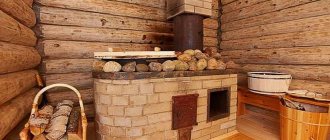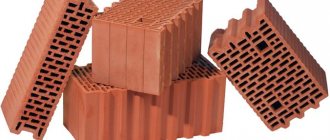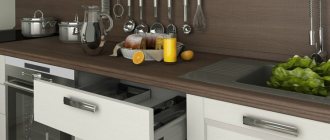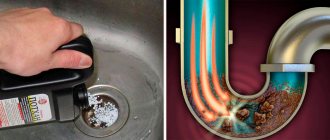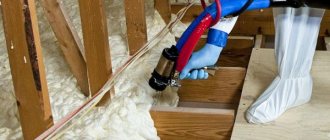We tell you how to make a homemade turbo stove using simple and affordable materials that many people have on hand (for example, from a pipe of a suitable diameter).
In any case, getting all the necessary “components” to assemble the stove is not a problem.
We offer different design options to choose from. They differ in the types of materials used and the complexity of production.
To make a rocket stove with your own hands, you don’t really need any drawings. But if necessary, they can be easily found on the Internet.
1
Unusual grill with vertical loading of wood
Spring has finally arrived, which means it’s time for outdoor recreation, barbecues, and so on. For grill connoisseurs, I suggest you familiarize yourself with this project. The homemade product is a simple and convenient oven for frying meat, vegetables and other products. The cooking surface is easy to clean thanks to a well-designed drain, and the stove consumes very little wood. Everything is made of sheet iron, firewood is loaded into the stove vertically, from above. It’s convenient; you don’t have to constantly open the door, put in firewood, and so on. We simply insert the sticks vertically into the firebox, and they themselves will go into the firebox as they burn. As a result, the fuel burns long and efficiently.
Under the hob, hot gases travel through a labyrinth, transfer heat to the hob, and only then exit into the chimney. If this project interests you, I suggest you familiarize yourself with it in more detail!
Materials and tools used by the author:
List of materials:
- sheet iron; - chimney; — long bolts with nuts for the legs; - a piece of profile pipe.
Grill making process:
Step one. Frame
First of all, let's assemble the furnace body; it is an iron box, which is divided inside by a partition into two parts, resulting in a labyrinth for gases.
A piece of profile pipe is welded at the edge of the cooking surface in the very corner; the cooking surface must be welded hermetically. As a result, thanks to the profile pipe, we get a drain through which dirty water will flow when you wash the hob.
Step two. Fireboxes and chimney pipe
The stove has two fireboxes, one is located classically horizontally, it is needed to ignite the stove. And when the draft has already formed, the door of this firebox can be closed and then the firewood is loaded through the vertical firebox.
The vertical firebox is a rectangular pipe, it is made of sheet iron. To correctly bend a thick iron sheet, you need to make cuts in the necessary places with a grinder.
As for the smoke pipe, it is needed to attach the chimney. To make such a pipe, you can cut a piece from an existing pipe, cut it lengthwise, and then compress and weld it so that the piece fits inside the chimney.
Well, then we weld the pipes into place, having previously cut holes in the oven. The author hung the fire door on a long bolt and nuts.
Step three. Legs and first launch
We weld the legs to the stove; the author made them from long bolts and nuts. After this, you can start the oven for the first time. The vertical firebox needs to be covered, we install a chimney and light the stove through the horizontal firebox. When the draft has already begun, you can heat the stove through a vertical firebox, feeding wood from above.
You can test the oven by heating it and washing it before cooking. We pour water onto the hob, the temperature and water will do their job, the dirt will immediately wash off on its own and flow out through the profile pipe to the ground. You can start cooking, the author easily boiled water and fried the eggs. The oven can also fry fairly large pieces of meat without difficulty. The only drawback of the design is that the intensity of combustion cannot be controlled. Perhaps you can cut the valve into the chimney.
At this point the project can be considered successfully completed, I hope you liked the homemade product and found useful thoughts for yourself. Good luck and creative inspiration if you decide to do this again. Don't forget to share your ideas and crafts with us!
Source
Budget price segment
#1
Teplodar Matrix-100
Heating stove with a universal chimney and long-burning mode
Expert rating:95/ 100
The model is designed for heating rooms, equipped with a hob, a convection system and a long-burning mode, made of heat-resistant steel.
The device has a top and rear chimney connection, which allows you to adjust the location of the stove to the specific layout.
Characteristics:
- thermal power - 10 kW;
- connection to the chimney - top/rear;
- functionality - long burning mode;
- equipment - hob with 1 burner, ash box;
- pipe diameter - 115 mm;
- dimensions - 32*60*61 cm;
- weight - 52 kg.
How to make a rocket stove
The simplest solutions for organizing heating of a private home will always be popular, especially among DIYers. These include a wood-burning rocket stove, which you can make yourself without significant financial costs. The heater is quite interesting and deserves special attention. Let's look at the operating principle of a rocket stove, its advantages and disadvantages, and methods of making it at home.
How to choose and what to pay attention to?
The tips are as follows:
- Pay attention to power and efficiency . The indicators are indicated in the technical specifications of the model. Power is determined in cubic centimeters: how much volume the stove can heat. The higher it is, the more productive the device. The same applies to efficiency - the higher the percentage, the longer the heat in the room is retained.
- Case material . Stoves are made of cast iron, steel, brick. There are combined models. When choosing, you should start from your personal beliefs, since all materials have only positive qualities.
- Burning duration . The minimum heating time from one stack of firewood is 4 hours. Good models are able to maintain heat in a room without refueling for 12 hours.
- Type of fuel . Fireplace stoves consume wood, coal or peat briquettes. The choice in favor of a specific type of fuel depends on the preferences and financial capabilities of the person.
- Chimney diameter . The wider the element, the better the combustion products are removed. A good option is a chimney with a diameter of 14 cm.
How does a rocket stove work?
It is noteworthy, but the so-called rocket or jet stove actually has nothing to do with jet propulsion, much less with space flights. This popular name arose for 2 reasons: due to some similarity of the operating unit to an inverted rocket and due to the buzzing sound. True, it appears in a certain wood burning mode and indicates too much air supplied to the firebox.
Important. A mode in which the rocket stove makes a loud noise or even roars is ineffective and uneconomical. During normal operation of the potbelly stove, only a quiet rustling sound is heard.
At the moment there are 2 types of jet wood stoves:
The simplest portable modification of a rocket-type stove is mass-produced under the name “Robinson” and is intended for heating water and cooking food in camp conditions. Using her example, it is easiest to understand the principle of operation of the unit. Essentially, it is a pipe in the shape of an inverted letter “L”, as shown in the diagram:
How does a rocket stove work:
The operating principle of the so-called jet furnace is to use the energy of the upward flow of combustion products. The higher the temperature of the firebox walls, the more intense the wood burns and the more powerful the flame.
Due to the natural draft that arises, a simple steel Robinson stove heats a large container of water in about ten minutes. And if you make the vertical section insulated, as shown in the diagram, then after warming up you will be able to burn fairly thick logs.
Stationary oven option
Do-it-yourself stationary rocket stoves for heating a home are equipped with a special hood to retain the heat of the flue gases and then transfer it into the room. In this case, the overall picture of wood burning is somewhat different. With a limited supply of primary air and fuel combustion, pyrolysis gases begin to be released. They are burned in the lower part of the vertical pipe, where secondary air is supplied through a separate channel.
A stationary rocket stove does not differ in operating principle from a portable one, only the flue gases are discharged through the hood and stove bench into the chimney
Note. In this respect, a wood-burning stove-rocket is similar to a long-burning pyrolysis heater, only it does not use a fan to force air.
The hot combustion products, rising under the hood, begin to cool, after which they fall in the space between the walls and enter the chimney channel. In this case, three forces act on the gases:
FAQ
Can Rocket be used in a greenhouse?
Yes. A rocket stove is suitable for heating a greenhouse. The chimney pipe is buried in the ground. Other models are not capable of working in such conditions. For this stove, it is enough to have a small difference between the firebox (air inlet) and the end of the chimney. And there is no need for forced air supply at all.
How often should the rocket furnace firebox be cleaned of soot?
The main part of combustion products evaporates independently through the chimney pipe. You need to remove ashes from the firebox every 15–20 days.
A rocket stove is an opportunity to quickly heat a small room and cook food using a minimum amount of fuel
Manufacturing recommendations
The easiest way is to make a small portable stove with your own hands - the Robinson rocket, whose drawing is presented below. You will need cutting profile pipes, metal for legs and stands, as well as welding skills. Moreover, compliance with the exact dimensions indicated in the drawing is not necessary. You can take pipes of a different section, but you just need to reduce or increase them proportionally so that the parts fit together.
Drawing of an improved “Robinson” camping stove with nozzles made of a profile pipe, cut lengthwise into 2 parts
Note. Please note that the drawing shows a design improved by our expert Vitaly Dashko. As befits a rocket, improvised nozzles are attached to it, which receives secondary air for afterburning, which enters the pipe through a series of holes. Due to this modernization, the combustion intensity increases noticeably. For more information about the operation of a compact wood stove, watch the video:
The most common versions of large rocket stoves are made from a gas cylinder or a two-hundred-liter metal barrel. You must understand that these ready-made elements are used as an outer hood, and the internal parts of the stove must be made from pipes of smaller diameter or laid out from fireclay bricks. Moreover, from a cylinder you can make both a stationary heater with a small bench, and a unit that can be moved.
Please note that calculating the thermal power of a rocket-type furnace is quite difficult; there is no single calculation method. It’s easier to rely on ready-made drawings of already working samples and assemble according to them. You just need to compare the dimensions of the future stove with the dimensions of the heated room. For example, to heat a small room, the size of a cylinder is enough; in other cases, it is better to take a large barrel. The selection of internal parts for them is shown in the diagram:
2 options for potbelly stoves - from a gas cylinder and a standard iron barrel
Stove rocket from a cylinder
In addition to the gas cylinder itself, to assemble the stove you will need:
For a master skilled in welding, this work will not be particularly difficult. The top of the cylinder should be cut off along the seam, after first unscrewing the valve and filling it to the top with water. Openings are cut on both sides for installing a firebox and inserting a chimney. A profile pipe is inserted and connected to a vertical channel, which is discharged through the bottom of the cylinder. Further work on the manufacture of the rocket furnace is carried out in accordance with the drawing:
At the end, the upper part must be welded into place, then carefully check all seams for permeability so that air does not flow uncontrollably into the oven. After this, you can attach a chimney with a water jacket (if available) and begin testing.
Important. To create sufficient draft, the top of the pipe must be raised above the level of the firebox to a height of 4 m.
Masonry of a rocket-type heater made of bricks
This stove option will require the purchase of fireclay bricks; ordinary ceramic bricks will not work for a rocket stove. The masonry is done using fireclay clay mortar; it is also sold as a ready-made building mixture. How to make a stationary rocket stove:
Then it’s a matter of technology; you can take the chimney directly outside or build another bench with smoke circulation. For this purpose, ordinary ceramic bricks and clay-sand mortar will do. The order of the brickwork of a rocket stove with a small bench is shown in detail in the video:
Principle of operation
Oddly enough, the name “rocket stove” itself has nothing to do with space or rockets themselves. The only analogy that can remotely remind us of this is a jet of flame rising upward in mobile installations.
The design feature of the furnace is the presence of a hood into which flue gases enter and where the final combustion of the sludge occurs. Under the hood, the temperature rises to 1000 0 C within the first 2 hours, as a result of which everything burns without sediment, and the exhaust is formed only in the form of steam and carbon. In this case, gases circulate freely through the channels without forced draft, which is usually created by a chimney pipe.
This design allows the stove to be used not only for heating the room, but also for heating food or water (on the hood). If the chimney is run through a certain area of the room, right up to the lounger, it will also heat up.
Photo 2 Rocket stove in the interior
Among the main advantages of rocket stoves are the following:
- high efficiency – 85%;
- very fast heating of the room - 50 sq.m. in 45-60 minutes;
- absence of soot and, as a consequence, soot deposits - at temperatures above 1000 degrees, everything burns without a trace;
- the ability to use any solid fuel;
- minimum consumption - at the same temperature and burning duration, a rocket stove consumes 4-5 times less fuel than a conventional stove.
The simplest rocket works according to the direct combustion formula - these are mobile structures that can be easily assembled in field conditions literally from scrap materials and can also be easily dismantled.
The simplest design from a barrel or gas cylinder
If we are talking only about the first stages of self-manufacturing a rocket stove (see video), then it is still worth starting the acquaintance with the simplest design. A camp stove is presented in the form of a bent section of pipe, where the fuel chamber and ash pan are combined.
Photo 3 Traveling rocket stove
For fuel, a steel plate is welded to the bottom, at the bottom of which a hole is cut for air intake.
You can use any straight cylindrical container for manufacturing - the drawing of a rocket furnace shows how the direct combustion process occurs.
Photo 4 Schematic of a traveling rocket
To increase the efficiency of the design, it is recommended to use a secondary casing. It can be made from a barrel or a used gas cylinder.
Video 1 Simple design of a portable cooking rocket stove
Brick rocket stove in 20 minutes
If you have 20-30 bricks on hand, you can make a simple rocket stove with your own hands in just a few minutes. Moreover, no adhesives are needed for masonry.
Lay out a vertical combustion chamber from brick, as shown in the photo. In this case, the dishes are placed on the hood in such a way as not to interfere with the movement of released gases
Do-it-yourself rocket-type brick oven:
Photo 5 Rocket stove made of 20 bricks
For such a design to work well, a warm pipe is needed. This term among stove makers means a preliminary run of wood chips and paper so that the pipe warms up. There will be stagnation of gas in a cold pipe, which will make heating difficult. And if the pipe is warm, then when the wood is ignited, a powerful draft appears in the channel.
For reference. The above simplest designs made from a gas cylinder or pipe have a significant drawback - vertical loading of firewood. Each time you have to move the wood into the chamber when it burns out and only then add it. Stationary coal-fired or long-burning rocket stoves already have a vertical stack, which simplifies operation many times over.
Long-burning rocket stove
Photo 6 Design of a stationary rocket furnace
DIY rocket jet stove diagram
In order to make such a unit with your own hands, you need to decide on the dimensions and structural elements.
How the rocket works:
As can be seen from the drawing, the diameter of the cap (D), which covers the top of the pipe, and its cross section (S) are taken as the basis.
Based on these indicators, the dimensions of the rocket furnace are calculated:
- the height of the drum is 2 of its diameter;
- the height of the clay coating is 2/3 of the height;
- coating thickness – 1/3 of the diameter;
- cross-sectional area of the pipe – 7% of its cross-section;
- blower area - 1/2 of the pipe section;
- the flame tube horizontally and vertically must be the same;
- ash pan volume – 4-6% of the drum height;
- The cross-sectional area of the external chimney is the double cross-section of the pipe.
- the thickness of the insulating layer (adobe cushion) under the external chimney is 60 mm;
- the thickness of the coating of the stove bench is 1/4 of the diameter of the drum;
- external pipe height – 4000 mm;
- The length of the flue directly depends on the diameter of the drum. If for its manufacture we took a metal container with a diameter of 50-60 cm and a volume of 200 liters, then the length of the flue pipe will be at least 6 meters. If the diameter is half as large, then the bed should be made up to 4 meters.
If you are making a stationary rocket stove with your own hands, be sure to pay attention to the lining of the top of the pipe. This is necessary to isolate the roaster from the walls of the oven to prevent overheating of the walls. Fireclay bricks can be used for lining.
Photos of examples of original performance
It is noteworthy that not only the walls need protection, but also the lining itself. In order to protect it from flammable gases, you can create a metal sheathing and fill it with river sand. For this purpose, you can use any available metal object - a barrel, a bucket, galvanized steel.
Sand is poured into the bucket layer by layer, with each layer being generously watered for proper compaction. When you have filled the protection to the top with sand, leave it to dry for 7-10 days.
Lining the brazier is done much faster - fireclay bricks are laid on the clay mortar, and the space between the latter and the wall will also have to be filled with sand in layers - with water and time for drying.
Pipe lining diagram
All further work on the installation of a jet-type rocket furnace continues only after not only the lining, but also the clay protection, which is applied over the top cut, has dried.
Before making a stationary structure, practice on a traveling sample. After the first experience it will become clear even if you have not read the books on rocket stoves.
Disadvantages of the heating device
- This device is often used to heat food or water - indeed, a huge amount of heat, a hot cap, why not use this idea? However, connecting a water circuit in order to heat the entire house and not a room is impossible. The design is so simple that any intervention, including a coil, will disrupt the progress of work.
- Surprisingly, such a lightweight mobile heating device is completely unsuitable for either a bathhouse or a garage. Even with its high efficiency, a camping unit will not heat the air in the steam room to the required minimum. And in a garage or warehouse it is not recommended to use devices with direct open fire.
“Bubafonya” or piston PDG
This oven received its original name from the nickname of the author, who first posted the diagram in the public domain. Whether he is the inventor of this variety is unknown. Most likely, in one form or another it has existed since ancient times, since its action is based only on the laws of physics and nature.
The peculiarity of this version of the PDG is the constant pressure of the piston, the heel of which balances and maintains a constant uniform temperature, not allowing individual areas to cool down or overheat.
Design
“Bubafonya” is something like a piston internal combustion engine cylinder in an extremely primitive form:
The simplicity and reliability of the design, as well as the availability of the material, made this stove the most popular among villagers and garage owners. “Bubafonya” is the record holder for the longest burning time - a combustion chamber from a 200 liter barrel with a full, dense vertical load works for 20–24 hours.
How to assemble
1. Cut off the top lid of the barrel (it must not be rotten). It can then be used under the oven lid. If it is a gas cylinder, we cut it along the junction of the head and the wall. We cut out a chimney hole 20–30 mm from the top edge and weld a channel from a 100–120 mm pipe.
2. Air duct (VD). For a compressor chamber of any size, the sufficient internal diameter of the explosive pipe is 75 mm. The length of the explosive is equal to the height of the KS plus 200–300 mm.
3. Heel. We cut out a sheet of 4–6 mm in the form of a circle with a diameter smaller than the combustion chamber by 30–40 mm.
4. Cut a hole in the center of the heel equal to the internal diameter of the explosive plus 2–3 mm. A strip edge can be welded along the edge to stabilize the piston when the firebox is loaded.
5. We weld 30x30 or 40x40 corners in the form of rays from the center onto the working surface of the heel.
6. We weld the explosive to the heel at an angle of strictly 90º on the reverse side of the ribs.
7. Weld an M6 nut on the free end of the explosive from the inside. We cut the damper along the explosive section and install it on the screw. You can use a magnet of a suitable diameter. This damper regulates the air supply to the combustion chamber.
8. We weld a strip of 20–30 mm in circumference onto the lid, like a side.
The fuel for a long-burning piston stove of the “Bubafonya” type can be any solid combustible material, but, as a rule, it is firewood. A small amount of rubber or plastic will not give a “black exhaust”, because it will completely burn out in the combustion chamber. Fuel is loaded with the piston removed, but as work progresses, the stove can be reloaded with small firewood through the explosive pipe. Safe ignition can also be done via explosives.
A problem that doesn't exist
A meticulous craftsman will try to fit the explosive under the lid, and the lid under the CS as tightly as possible and even provide seals. It was experimentally found that such “improvements” result in the inability of the furnace to work productively. The secret lies in the secondary air, which is pumped through the gaps in the upper part and provides traction. In this case, the slots act as injectors, which we described in the previous article.
Making the most of it
Convector. To remove heat from the combustion chamber (furnace), there is a simple and effective solution based on air convection.
Convection is a type of heat transfer in which thermal energy is transferred in streams or jets.
To construct a primitive convector, we will need a profiled galvanized sheet with medium wave, which we simply need to wrap around the combustion chamber. The profile waves will serve as channels through which air will flow. Heated from the stove, it will rush upward, and its place will be taken by cold air coming from the bottom of the channel. If there is no profiled sheet, you can fasten CD or UD profile trim around the firebox and chimney.
Casing. Another type of convector can be a primitive coaxial system.
Coaxial - from the Latin co - joint and axis - axis, i.e. having a common axis.
To do this, we weld brackets 40–50 mm long onto the combustion chamber, spaced 50 mm from the top and bottom. We fix a sheet of metal on them. The thickness is not critical here, since the coolant is air, and the casing itself will not heat up. Thin galvanized steel, which can be made removable, is suitable.
Long, smooth chimney. If it is possible to easily increase the length of the chimney indoors, this will allow the remaining temperature of the exhaust gases to be removed.
A fan directed at the DHW effectively mixes the air, which will provide quick and uniform heating of the room.
The described version of the stove has one, but significant drawback, which can be considered as a tribute to the simplicity of the design. Cleaning the ash pan is a dusty job. The ash pan itself is the bottom part of the combustion chamber and removing ash through the side is inconvenient, but necessary.
Advice. We recommend keeping 80–100 mm of ash at the bottom at all times - this will prevent the bottom from burning out prematurely.
Another nuance can only be called “production costs”. When using a barrel, the walls of the firebox burn out relatively quickly. With intensive use (at high temperatures), the combustion chamber will have to be replaced after 3-4 seasons. But here, too, simplicity ensures success - just find the same barrel. In this case, the gas cylinder will serve for decades.
Description and principle of operation of a solid fuel boiler
General view of the boiler
A long-burning solid fuel boiler is a large firebox with a limited solid fuel combustion area and a controlled supply of oxygen. The operating principle of the device is based on the ability of solid fuel elements to smolder for a long time with increased heat transfer. The process involves complete combustion of the substance with minimal waste generation.
A large amount of solid fuel is loaded into the furnace on average 1–2 times a day, but there are units that can operate for several days. By regulating the flow of oxygen into the combustion zone, slow smoldering occurs at elevated temperatures. The smoke is discharged through a special pipe. It passes through the heat exchanger and warms up the water for the heating system. Timely loading of the firebox ensures almost continuous operation of the device.
Fuel combustion in a long-burning boiler often occurs from top to bottom. In this case, as the top layer burns out, the fire moves lower to the next layers. Such thermal units have many advantages that ensure their popularity among all groups of the population:
- Increased firebox volume for loading fuel.
- Long life on a single load.
- Great heat dissipation.
- Environmental friendliness. During operation, the heater emits a minimal amount of exhaust gases.
Standard long-burning boilers differ in the type of fuel used:
- Devices operating on one type of fuel. Typically, this is used as firewood, sometimes as pallets obtained from waste from the wood processing industry.
- Universal units. Here it is possible to combine several types of solid elements - firewood, sawdust, pallets.
According to the type of operation, all existing types of long-term combustion boilers can be divided into two large groups:
- Pyrolysis. The operation of such devices uses the principle of pyrolysis. Solid fuel particles burn out at high temperatures and poor oxygen supply. The process produces gas, which is sent to a separate compartment where it burns. This principle increases the boiler efficiency and fuel combustion time.
- Classic. They have a simplified design, differ in the volume of the firebox, the combustion method, the presence of a water jacket circuit, etc. The simplest classic boiler without a jacket is a metal container made of a pipe or barrel, where solid particles are burned according to the “top to bottom” principle.
The scope of use of solid fuel boilers is extensive. Household models heat private households, shops and similar residential and non-residential facilities. Large industrial units, which require a separate equipped room, can heat a small plant. The popularity of boilers is due to their low cost and ease of operation.
"Rocket" or rocket stove (RP)
Another type of energy-efficient stove is known as the “Rocket” or “Rocket stove”. It received a sonorous name because of the reactive process based on heat exchange with a significant temperature difference (and the resulting thrust), which is also implemented in rocket jet engines. This natural phenomenon is inscribed in the basic laws of physics due to its trouble-free operation.
Design
The RP always has a “knee” of no more than 90° in one form or another. That is, the chimney is located at a right or acute angle to the bottom of the firebox. It is necessary to have an air duct (AH), which is often located adjacent (through the wall) to the firebox.
Calculation of basic parameters (with drawings and dimensions)
High efficiency of a potbelly stove can only be achieved if all the main design parameters are correctly calculated.
Pipe
In this case, the diameter of this element is very important. The throughput of the chimney should be less than the productivity of the furnace firebox, which is the main distinguishing feature of a potbelly stove. This will allow warm air not to immediately leave the stove, but to linger in it and heat the surrounding air.
It is very important to make an accurate calculation for it. The diameter should be 2.7 times the volume of the firebox. In this case, the diameter is determined in millimeters, and the volume of the firebox in liters
For example, the volume of the combustion chamber is 40 liters, which means the chimney diameter should be about 106 mm
In this case, the diameter is determined in millimeters, and the volume of the firebox in liters. For example, the volume of the combustion chamber is 40 liters, which means that the chimney diameter should be about 106 mm.
If the potbelly stove provides for the installation of grates, then the height of the firebox is calculated without taking into account the volume of this part, that is, from the top of the grate.
Screen
It is very important to force the hot gases not to cool, but to burn out completely. In addition, the fuel must burn through partial pyrolysis, which requires extremely high temperatures. A metal screen located on three sides of the stove will help to achieve a similar effect.
It should be placed at a distance of 50–70 mm from the stove walls, due to which most of the heat will return to the stove. This air movement will give the necessary high temperature and protect against fire.
A metal screen located on three sides of the stove will help to achieve a similar effect. It should be placed at a distance of 50–70 mm from the stove walls, due to which most of the heat will return to the stove. This air movement will give the necessary high temperature and protect against fire.
The screen of a potbelly stove made of red brick is capable of accumulating heat
Litter
It definitely has to be there. There are two reasons for this:
- some of the heat is radiated downwards;
- the floor on which the stove stands gets hot, which means there is a risk of fire.
The litter solves these two problems at once. As such, you can use a metal sheet with a projection of 350 mm (ideally 600 mm) beyond the contour of the furnace itself. There are also more modern materials that do an excellent job of this task, for example, a sheet of asbestos or kaolin cardboard, at least 6 mm thick.
You can use an asbestos sheet for bedding under a potbelly stove.
Chimney
Despite all the calculations, gases sometimes escape into the chimney not completely burned out. Therefore, it must be done in a special way. The chimney consists of:
- the vertical part (1–1.2 m), which is recommended to be wrapped in thermal insulation material;
- hog (slightly inclined part or completely horizontal), 2.5–4.5 m long, which should be 1.2 m from the ceiling, which is not protected with heat-resistant materials (1.5 m from the wooden surface), from the floor - by 2.2 m.
The chimney must be vented to the street
Photo gallery: diagrams of a potbelly stove for a garage
The diagram must indicate all the exact measurements. The chimney must be led out onto the street. The potbelly stove can be round or square. The volume of the firebox depends on the presence of grates. The layout of the potbelly stove depends on the material used.
Installing a chimney in a wooden house
The combustion temperature inside the firebox of a solid fuel stove is at the level of 450-550°C. The surface of the chimney heats up to 300°C. When soot ignites, short-term heating to 800-1000°C is possible. Due to high temperatures, fire breaks must be provided when installing metal chimney pipes.
Existing PPB rules stipulate compliance with the following conditions:
- Chimney type - it is recommended to install a sandwich pipe made of stainless steel and ceramics with thermal insulation.
- Breaks and thermal insulation materials - in places where they adjoin the walls, the pipe is removed from the surface by 25 cm. The walls are covered with basalt cardboard, followed by sheathing with stainless or galvanized steel.
- Installation of ceiling cutting - when passing through the floor slabs, leave a distance of 25 cm on each side between the surface of the pipe and the combustible material. The gap is filled with basalt insulation. The use of factory ceiling trim is allowed.
The chimney is discharged inside and along the outer wall of the building. In the first case, care is taken to ensure sufficient insulation of the pipe when passing through the floors and roof. In the second, it becomes necessary to ensure that the chimney is fixed to the walls of the building to overcome the wind load.
Briefly about the main thing
The Swedish stove is a popular heating and cooking design that provides enough heat to heat your home and cook. There are various models of Swedes, not only with a stove, but also with a fireplace, oven or stove bench.
Regardless of functionality, they all require the use of high-quality, especially durable materials. You should not skimp even on clay for masonry mortar; reliability and durability of operation depend on it.
The oven is manufactured strictly according to a plan, including an order - a separate detailed diagram for each row. It is recommended to lay out the rows dry first, this will help to avoid mistakes. After the masonry is completed, the oven is left to dry, which includes a natural and forced stage.
Middle price segment
#1
Breneran AOT-14/02
A powerful, grateless Buleryan stove is an interesting option for a spacious cottage
Expert rating:94/ 100
The product is a round steel firebox with all-metal pipes built into the body to enhance air convection. The body is painted with heat-resistant enamel.
Unlike competing models, the design includes 2 combustion chambers. Wood is burned in the lower compartment, and gases are burned in the upper compartment. The stove is without a grate - firewood is burned not on a grate, but on the ash remaining after the previous ignition.
Characteristics:
- thermal power - 18 kW;
- connection to the chimney - rear;
- functionality - secondary afterburning, long-term combustion mode;
- equipment - box for ash;
- pipe diameter - 150 mm;
- dimensions - 59*84*94 cm;
- weight - 130 kg.
During operation, the massive body accumulates thermal energy and then gradually releases it, maintaining the temperature in the room for several hours.
Before purchasing a device, it is worth remembering that according to the instructions, the length of the chimney must be at least 7 m, and you will also need a container for draining condensate. The model works well only with dry firewood.
Advantages
- Suitable for large rooms - up to 160 sq. m
- Burning duration - up to 10 hours
- Adjusting the combustion intensity
- There is a box for ash
- Economical fuel consumption
Flaws
- No hob
- Door without glass
- There is a burning smell in the room
#2
THORMA Bozen
Vertical stove with a spacious ash pan and the ability to adjust the flame level
Expert rating:93/ 100
The unusual design of the narrow vertical stove fits well into small spaces. And the glass self-cleaning system makes it possible to enjoy the magical view of the flame at any time.
Characteristics:
- thermal power - 5 kW;
- connection to the chimney - rear;
- functionality - “clean glass” technology, flame level adjustment;
- equipment - ash container;
- pipe diameter - 120 mm;
- dimensions - 33*91*35 cm;
- weight - 60 kg.
Users liked the glass-ceramic door, which has a secure lock providing protection from sparks and extreme heat. In addition, the model is equipped with a hob, which makes it possible to cook food on it.
In order to use firewood more efficiently, experts recommend alternating horizontal and vertical stacking in the firebox. This way the wood will burn out more slowly.
Advantages
- Attractive design
- Clean glass system
- Firewood can be stacked vertically
- Adjusting the combustion intensity
- Light weight and easy to install
Flaws
- The hob is located high
- Low thermal power
- No long burning mode
#3
Brandenburg Prism with cast iron plate
Functional wall-mounted stove-fireplace with ceramic finish
Expert rating:92/ 100
A highly efficient wall-mounted fireplace stove, designed for heating residential premises with a volume of up to 120 m³. Equipped with a secondary combustion system.
Characteristics:
- thermal power - 5 kW;
- connection to the chimney - rear;
- functionality - “clean glass” technology, flame level adjustment;
- equipment - ash container;
- pipe diameter - 120 mm;
- dimensions - 33*91*35 cm;
- weight - 60 kg.
The cast iron door is glazed with special glass that can withstand temperatures up to 800°C, and has a self-cleaning system.
Perhaps the only drawback of this wood-burning stove is its cost, which not every owner of a summer cottage can afford.
Advantages
- Beautiful design
- Removable ash drawer and firewood compartment
- Hob with burner
- Clean glass system
- Large heating power
Flaws
- Smoke comes out when the door is opened
- Complaints about build quality
#4
Kratki Koza K7
Cast iron fireplace stove from a Polish brand - beautiful design and high-quality assembly
Expert rating:91/ 100
A highly efficient cast iron stove with a glass door is well suited for heating residential premises and summer cottages. The material of the body and firebox is heat-resistant cast iron. The model has replaceable side panels.
Among competitive stoves, the Kratki Koza K7 unit stands out with its interesting design. Such a fireplace will decorate the living room of a country house.
Characteristics:
- thermal power - 7 kW;
- connection to the chimney - rear/top;
- functionality - “clean glass”, “cold handle” technology;
- equipment - ash container;
- pipe diameter - 130 mm;
- dimensions - 54*56*41 cm;
- weight - 75 kg.



